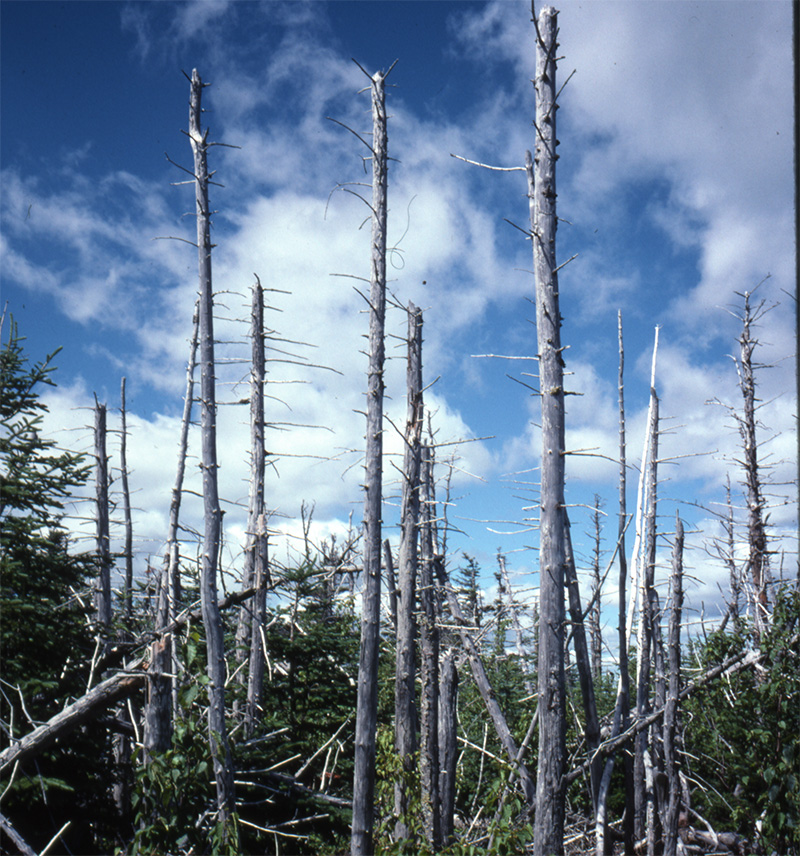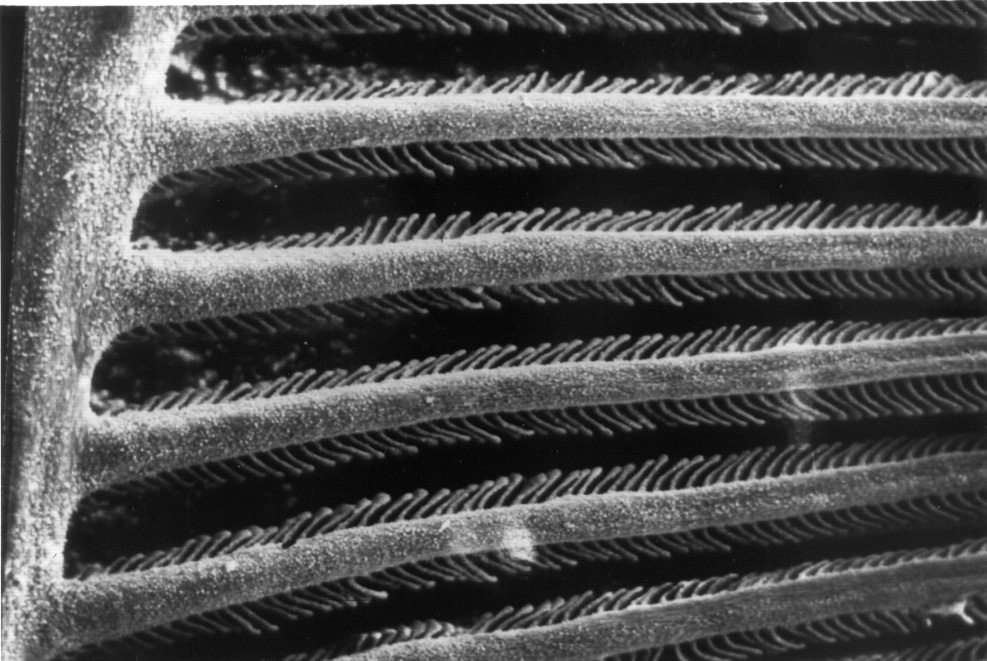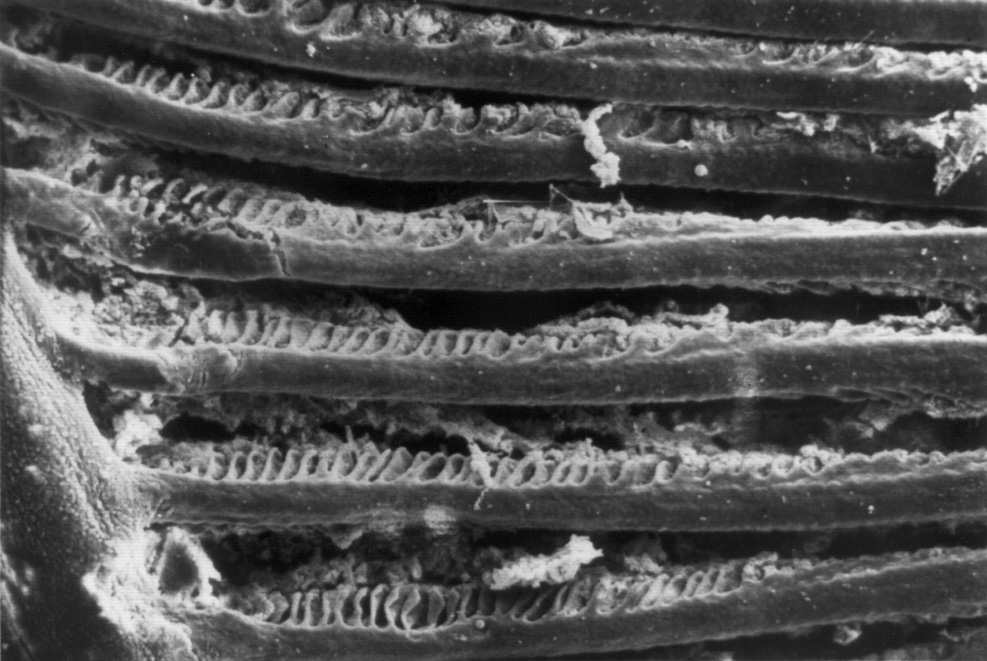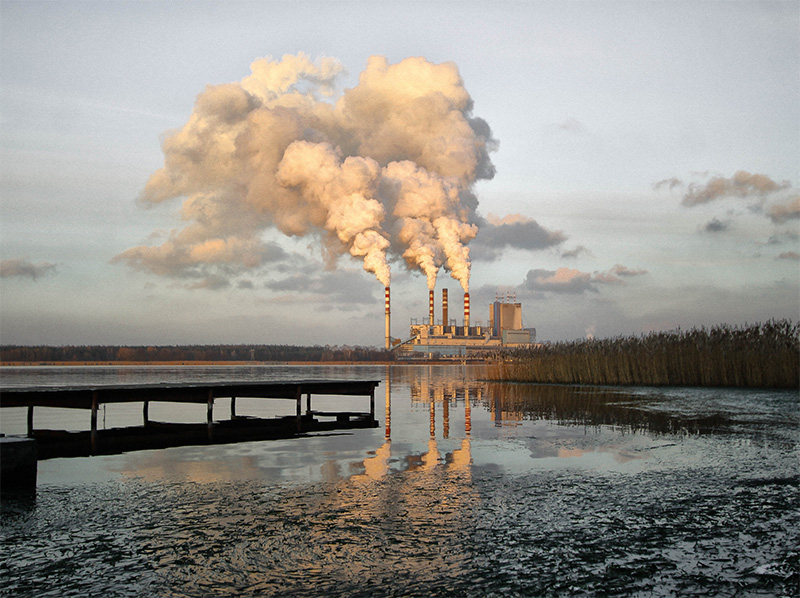
Acid Rain & Climate Change Are Connected, Here’s How
Friday, December 6, 2019
By: Jackie Bowen - Adirondack Council Conservation Fellow
Acid rain inflicted devastating losses to alpine vegetation, fisheries, water quality, and soil health in the Adirondacks during the 1970s and 1980s. It was the prevailing threat of our region for two decades before policy, regulations, science, and monitoring were used to successfully curb emissions at the state and federal levels. Since then, nature was able to do what it does so well, heal and restore. As a result, we are now seeing fish species restored in Adirondack lakes.
Fighting acid rain has been a huge success, but today we have a new threat: climate change. It is an even more complex environmental issue than acid rain because it is occurring on a global scale. However, the two are not disconnected, independent issues. They are linked by a common denominator: human causes.
It is the human activities that emit large quantities of pollutants and toxins into the atmosphere that cause climate change and acid rain deposition, which have negative and harmful impacts on the natural world (including humans) across the globe.
A Quick Review
Acid rain is the deposition of acidic precipitation that falls from the atmosphere to the ground. It is the result of toxins being released into the atmosphere via sources like coal-fired power plants and motor vehicle exhaust. According to the Environmental Protection Agency (EPA), acid rain is created when sulfur dioxide (SO2) and nitrogen oxides (NOx), as well as particulate matter (very fine particles), undergo a chemical reaction when exposed to water and oxygen. This reaction creates airborne sulfuric and nitric acids – aka, acid rain. Wind can carry acid rain long distances…hundreds of miles from where it is originally sourced. The acid rain that impacts the Adirondacks is produced by Mid-western coal-fired power plants.
Climate change is a change in regional or global climate patterns from average weather in the form of temperature, precipitation, wind, humidity, and seasons due to human-generated greenhouse gases (GHGs). Greenhouse gases act as a blanket for the planet, allowing heat from the sun’s rays in but not allowing most of that energy back out. As a result, we are experiencing increasing global temperatures, rising sea levels, and more extreme weather events like flooding and wildfires.
So how are acid rain and climate change linked?
When one happens, the other gets worse
The causes of climate change and acid rain are anthropogenic and emissions based. When considering the cumulative gases and pollutants emitted from vehicles or coal power plants, we see the effects of acid rain and climate change are worsened.
Acid Rain causing pollution also causes climate change
For example, coal-fired power plants that produce acid rain also emit high levels of carbon dioxide that accelerate climate change. According to the U.S. Energy Information Administration, the coal industry produced 65% of CO2 emissions in the electric sector in 2018…that’s 1,150 million metric tons of CO2 emitted in one year alone. Therefore, by moving towards renewable forms of electricity generation like wind, solar and hydropower, we would minimize harmful GHG outputs AND acid rain deposition.
When acid rain impacts a lake, it is more susceptible to climate impacts
A report published by an aquatic biologist at Oregon State University and co-authors from Syracuse and Cornell Universities showed that clear lakes lacking healthy amounts of plankton and dissolved organic matter in the water due to acid rain impacts made conditions more harmful for trout populations. However, lakes that have recovered from acid rain damage, with darker waters where solar rays couldn’t reach as deep, trout had refuge from warming impacts.
Climate change causes acidification, too...it’s a double whammy
In an article written by the National Science Foundation (NSF) in 2012, scientific modeling and analyses showed how climate change was and would increase the acidification process of northeastern waterways and forests. According to the article, “scientists have discovered that a combination of today's higher atmospheric carbon dioxide (CO2) level and its atmospheric fallout is altering the hydrology and water quality of forested watersheds--in much the same way as acid rain.” With the Trump Administration’s air pollution rollbacks on acid rain coupled with the anticipated acidification brought on by climate change, it looks like the Adirondacks are in for a fight for survival.
 Die-off as a result of acid rain on Gothics Mountain
Die-off as a result of acid rain on Gothics Mountain
Impacts
Ecosystems exist within a delicate balance. Changes in pH, temperature or precipitation can disturb that balance and have devastating effects on flora, fauna and natural resources.
Climate Change
The impacts of climate change are already being realized; however, based on scientific data and projections, it is believed that we have a lot more changes in store. For example, if emissions continue at their current rate, New York will see an 11°F rise in temperatures and an annual increase of precipitation (rainfall) by five inches by the end of this century . These projected changes will mean shorter, warmer winters and more severe springtime flooding events.
Changes in temperatures and precipitation will also mean that the fragile ecosystems of the Adirondacks will be altered. If we continue on the current trajectory, the Adirondacks will look like the Blue Ridge Mountains of North Carolina by 2100. Rare and important alpine vegetation and bird species like the Bicknell thrush that require a delicate balance of temperature to limit competition and promote habitat will be at risk of loss.
Another consideration is the impact to our communities. In the winter months, Adirondack towns rely on cold-weather outdoor recreation to fuel local economies. Snowmobiling in communities like Old Forge and Inlet is an economic staple because it brings $16 million annually. With shorter warmer winters only slotted to get even shorter and warmer, it is unclear how local economies will be able to recover revenue generated by winter recreation.
With the increasing threat of both land and water invasive species, warm weather recreation like hiking and fishing will also be impacted. According to an Outdoor Industry Association report released in 2018, New York’s 21st congressional district’s residents spend $1.51 billion on outdoor recreation. Changes to our landscape resulting from climate change could greatly disrupt recreation economy in the Adirondacks.
Acid Rain
For acid rain, as we saw 30-40 years ago, the deposition of nitric and sulfuric acid in the form of rain, snow or smog impacts ecosystems by making lakes, streams and wetlands more acidic.
While some fish species can survive under more acidic conditions, important Adirondack species like the brook trout cannot. The increased acidity deteriorates their gills. In addition, acid rain harms soil quality by breaking down soil compounds and removing important nutrients like calcium. The acid also eats away trees’ leaves and needles. In the 1980s, trees at high elevation experienced die-off as a result of acid rain, including on Gothics Mountain and Mount Marcy.
 Normal, healthy fish gills
Normal, healthy fish gills
Acid rain also increases the presence of mercury in waterbodies by releasing naturally occurring mercury from the soil and polluting water resources. Prior to recovery over the past 30 years, increased levels of mercury resulted in significant impacts to loon populations in the Adirondacks and across the northeast.
Why We Should Care
Acid rain and climate change are both major threats to the Adirondacks.
While acid rain has been greatly reduced, there is growing concern over the emissions of Mid-western coal-fired power plants that are failing to utilize existing pollution reducing technologies. The Trump Administration’s rollback of the Clean Power Plan and the EPA’s failure to enforce Clean Air Act standards could mean the return of acid rain to the Adirondacks.
This reality, coupled with the impending impacts of climate change, means Adirondack fish, waters, trees, wildlife, and communities will have to contend with acid rain deposition AND changing climatic conditions.
 Jackie is the Council's Conservation Fellow. She has a Master’s Degree in Environmental Law and Policy, with a certificate in Land Use Law, from Vermont Law School. During her year and a half program she interned in Washington, D.C. at American Rivers where she worked with the Government Relations team to track legislation, identify federal funding sources and research tribal water rights. Jackie is the Council's Conservation Fellow. She has a Master’s Degree in Environmental Law and Policy, with a certificate in Land Use Law, from Vermont Law School. During her year and a half program she interned in Washington, D.C. at American Rivers where she worked with the Government Relations team to track legislation, identify federal funding sources and research tribal water rights.
|
||





